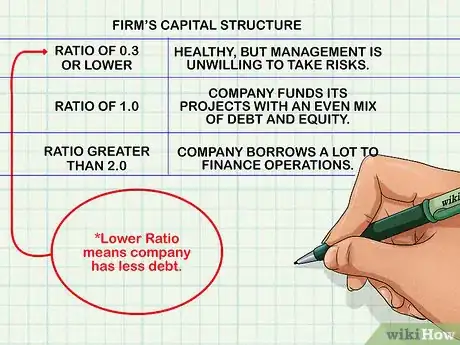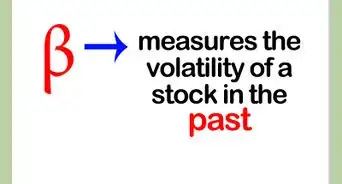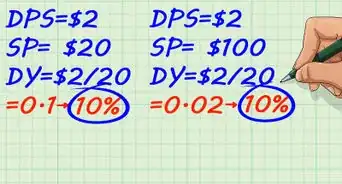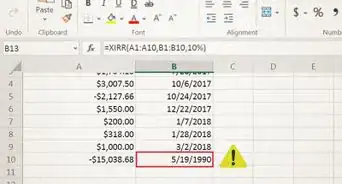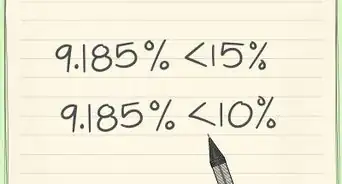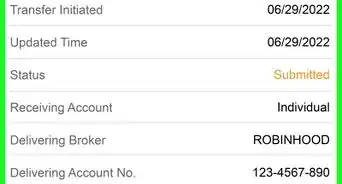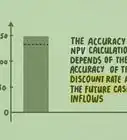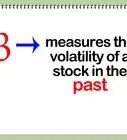This article was co-authored by Michael R. Lewis. Michael R. Lewis is a retired corporate executive, entrepreneur, and investment advisor in Texas. He has over 40 years of experience in business and finance, including as a Vice President for Blue Cross Blue Shield of Texas. He has a BBA in Industrial Management from the University of Texas at Austin.
There are 13 references cited in this article, which can be found at the bottom of the page.
wikiHow marks an article as reader-approved once it receives enough positive feedback. In this case, 92% of readers who voted found the article helpful, earning it our reader-approved status.
This article has been viewed 371,686 times.
The debt to equity ratio is a calculation used to assess the capital structure of a business. In simple terms, it's a way to examine how a company uses different sources of funding to pay for its operations.[1] The ratio measures the proportion of assets that are funded by debt to those funded by equity. The debt to equity ratio is also called the risk ratio or leverage ratio. It is a quick tool for determining the amount of financial leverage a company is using. In other words, it gives you an idea of how much a company uses debt to pay for operations.[2] It also can help you understand a company's exposure to interest rate increases or insolvency.
Steps
Doing the Basic Calculations and Analysis
-
1Determine the company's debt and equity. You can find the information you'll need to make this calculation on the company's balance sheet. You will have to make some decisions about which of the balance sheet accounts to include in your calculation of debt.
- Equity refers to the funds contributed by the stockholders, plus the company's earnings.[3] The balance sheet should include a figure labeled as total equity.
- When determining debt, include interest-bearing, long term debt such as notes payable and bonds. Be sure to include the current amount of long-term debt. You'll find this in the current liabilities section of the balance sheet.[4]
- Analysts often leave out current liabilities, such as accounts payable and accrued liabilities.[5] These items provide little information about how a company is leveraged. This is because they do not reflect long-term commitments, but only the day-to-day operations of the business.
-
2Watch out for expenditures that aren't listed on the balance sheet. Companies will sometimes keep certain expenditures off their balance sheets. This is to make their debt equity ratios look better.[6]
- You should include certain off-balance sheet liabilities when calculating debt. Operating leases and unfunded pensions are two common off-balance sheet liabilities. These expenditures are often large enough to include in the debt to equity ratio.[7]
- Other debt to look out for may come from joint ventures or research and development partnerships. Scan through the notes to the financial statements and look for off-balance sheet liabilities. Include those greater than 10% of the total of interest bearing debt.
Advertisement -
3Calculate the debt-to-equity ratio. Find this ratio by dividing total debt by total equity.[8] Start with the parts that you identified in Step 1 and plug them into this formula: Debt to Equity Ratio = Total Debt ÷ Total Equity. The result is the debt-to-equity ratio.
- For example, suppose a company has $300,000 of long-term interest bearing debt. The company also has $1,000,000 of total equity. This company would have a debt to equity ratio of 0.3 (300,000 / 1,000,000), meaning that total debt is 30% of total equity.
-
4Do a basic assessment of the firm's capital structure. Once you have calculated a company's debt to equity ratio, you can begin to develop an idea of its capital structure. Here are some things to keep in mind:
- A ratio of 0.3 or lower is considered healthy by many analysts.[9] In recent years though, others have concluded that too little leverage is just as bad as too much leverage. Too little leverage can suggest a conservative management unwilling to take risk.
- A ratio of 1.0 means that the company funds its projects with an even mix of debt and equity.[10]
- A ratio greater than 2.0 means that the company borrows a lot to finance operations. It means that creditors have twice as much money in the company as equity holders.[11]
- Lower ratios mean that the company has less debt, and this reduces risk.[12] A company with less debt will also have less exposure to interest rate increases and changes in credit conditions.
- Some companies will choose debt financing despite the increased risk. Debt financing allows a company to gain access to capital without diluting ownership. It may sometimes also result in higher earnings.[13] If a company with lots of debt becomes profitable, a small number of owners may make a lot of money.
Analyzing in Depth
-
1Consider the financing needs of the industry the firm operates within. As noted above, a high debt to equity ratio (above 2.00) is worrisome. Such a ratio may suggest a dangerous amount of leverage. For some industries though, high debt to equity ratios are appropriate.[14]
- For example, construction firms use construction loans to finance most of their projects. Although this leads to a high debt to equity ratio, the firm is not at risk of insolvency. The owners of each construction project are essentially paying to service the debt themselves.
- Finance companies may also have high debt to equity ratios because they borrow money at low rates and lend at higher rates. Another example would be capital-intensive industries like manufacturing. These companies often borrow money to buy raw materials for manufacturing.[15]
- Industries which are not capital intensive can have a lower debt to equity ratio. Examples would include software providers and professional service firms.
- To assess whether a company's debt-to-equity ratio is within an appropriate range, it is a good idea to compare it to other companies in the same industry, and/or to compare its current debt to equity ratio to that of past periods.
-
2Consider the effect of treasury stock on the debt-to-equity ratio. Treasury stock repurchases reduce the balance of stockholder’s equity. This can result in a massive increase in the debt to equity ratio.[16]
- Treasury stock purchases reduce shareholder equity and consequently increase the debt-to-equity ratio.[17] But, the overall impact on shareholders may be beneficial. This is because the remaining shareholders receive a larger portion of the net income and dividends with no increase in the debt load.[18]
- Financial leverage is increased by treasury stock purchases. At the same time, operating leverage (the ratio of fixed to variable costs) remains unchanged. In other words, the cost of production, pricing, and profit margins are not affected.
-
3Consider calculating the debt-service coverage ratio. When a company has a high debt to equity ratio, many financial financial analysts turn to the debt-service coverage ratio. This adds further insight about the ability of the company to repay its obligations.[19]
- The debt-service coverage ratio divides the company's operating income by its debt service payments. The larger the result, the more likely it is that the company will have enough income available to service its debt.[20]
- A ratio of 1.5 or higher is the bare minimum in most industries.[21] A low debt-service coverage ratio combined with a high debt to equity ratio should concern any investor.
- A high operating income may allow even a debt-burdened company to meets its obligations.
Expert Q&A
-
QuestionWhat are the reasons for the difference in debt equity ratio?
 Michael R. LewisMichael R. Lewis is a retired corporate executive, entrepreneur, and investment advisor in Texas. He has over 40 years of experience in business and finance, including as a Vice President for Blue Cross Blue Shield of Texas. He has a BBA in Industrial Management from the University of Texas at Austin.
Michael R. LewisMichael R. Lewis is a retired corporate executive, entrepreneur, and investment advisor in Texas. He has over 40 years of experience in business and finance, including as a Vice President for Blue Cross Blue Shield of Texas. He has a BBA in Industrial Management from the University of Texas at Austin.
Business Advisor The debt equity ratio will change any time the total debt or equity in the company changes. Debt can be increased by borrowing or reduced by payments while equity can be increased by additional income through operations, sales of assets above their book value, additional investments or reduced by operating losses, financial losses, sales of assets below book value, and payments of dividends.
The debt equity ratio will change any time the total debt or equity in the company changes. Debt can be increased by borrowing or reduced by payments while equity can be increased by additional income through operations, sales of assets above their book value, additional investments or reduced by operating losses, financial losses, sales of assets below book value, and payments of dividends. -
QuestionHow do I compare company ratios? Can I compare the current year company ratio to past year ratio?
 Michael R. LewisMichael R. Lewis is a retired corporate executive, entrepreneur, and investment advisor in Texas. He has over 40 years of experience in business and finance, including as a Vice President for Blue Cross Blue Shield of Texas. He has a BBA in Industrial Management from the University of Texas at Austin.
Michael R. LewisMichael R. Lewis is a retired corporate executive, entrepreneur, and investment advisor in Texas. He has over 40 years of experience in business and finance, including as a Vice President for Blue Cross Blue Shield of Texas. He has a BBA in Industrial Management from the University of Texas at Austin.
Business Advisor Yes, analysis generally requires comparison in order to make judgments. A change in the ratio from one period to the next is an indication that something has happened to affect the company, either purposely or inadvertent. Good managers will try to understand the cause of the ratio change effect.
Yes, analysis generally requires comparison in order to make judgments. A change in the ratio from one period to the next is an indication that something has happened to affect the company, either purposely or inadvertent. Good managers will try to understand the cause of the ratio change effect.
References
- ↑ http://www.investopedia.com/terms/c/capitalstructure.asp
- ↑ http://www.investopedia.com/terms/l/leverage.asp
- ↑ http://www.investopedia.com/terms/e/equity.asp
- ↑ http://www.investopedia.com/terms/d/debtequityratio.asp
- ↑ http://www.investopedia.com/terms/d/debtequityratio.asp
- ↑ http://www.investopedia.com/terms/o/obsf.asp
- ↑ http://www.fool.com/investing/value/2007/06/20/using-the-debt-to-equity-ratio.aspx
- ↑ http://www.investopedia.com/university/ratios/debt/ratio3.asp
- ↑ http://www.fool.com/investing/value/2007/06/20/using-the-debt-to-equity-ratio.aspx
- ↑ http://www.accountingformanagement.org/debt-to-equity-ratio/
- ↑ http://www.investopedia.com/university/ratios/debt/ratio3.asp
- ↑ https://xplaind.com/434880/debt-to-equity
- ↑ http://www.investopedia.com/terms/d/debtequityratio.asp
- ↑ http://www.investopedia.com/terms/d/debtequityratio.asp
- ↑ http://www.investopedia.com/terms/d/debtequityratio.asp
- ↑ http://www.fool.com/investing/value/2007/06/20/using-the-debt-to-equity-ratio.aspx
- ↑ http://www.fool.com/investing/value/2007/06/20/using-the-debt-to-equity-ratio.aspx
- ↑ http://www.rightline.net/education/buybacks.html
- ↑ http://www.investopedia.com/terms/i/interestcoverageratio.asp
- ↑ http://www.investopedia.com/terms/d/dscr.asp
- ↑ http://www.investopedia.com/articles/basics/04/040804.asp



